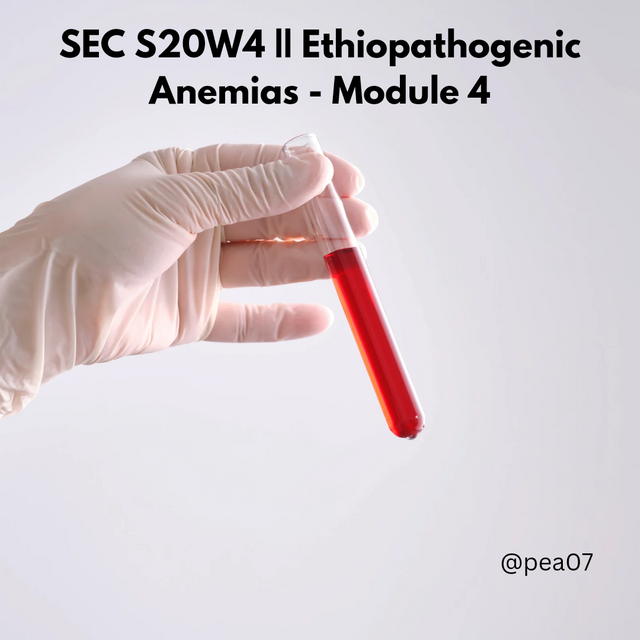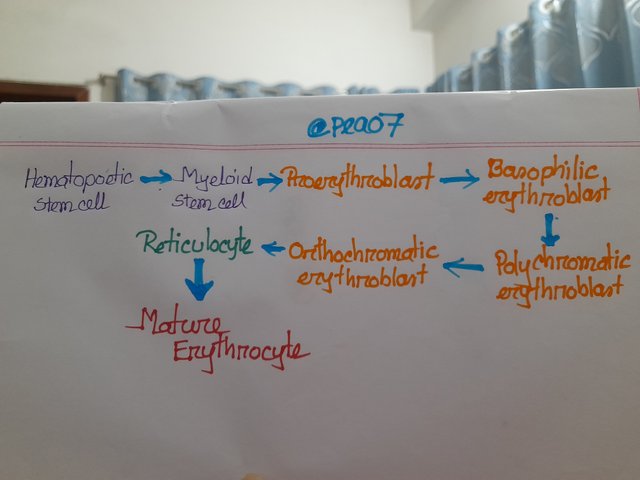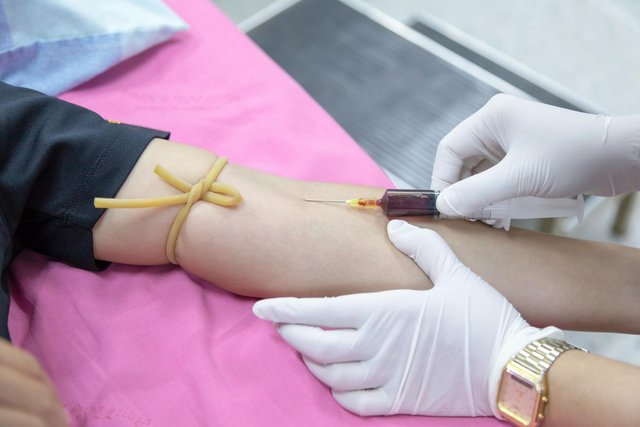I am pleased to participate in fourth week of SEC Season-20. Here I am happy to learned Ethiopathogenic Anemias. It was good to learn something special.

Defines Ethiopathogenic Anemia
Etiopathogenic anemias are a type of disease that is caused by an imbalance of red blood cells in our bone marrow. It basically occurs when there is an imbalance between our production of red blood cells and their release into the peripheral blood. This disease occurs when we have too many immature red blood cells in our peripheral blood and this is what we know as "Etiopathogenic Anemia". I would like to give this example in two ways, we all know that the average lifespan of a mature red blood cell is 120 days. But when there is excessive bleeding due to an accident or any other reason, our body supplies some immature blood cells to make up for the deficiency of red blood cells. And in such a condition etiopathogenic anemia occurs. One more example we can present the matter more simply. We have three people invited to a family program and pizza is prepared for all three but three extra guests come along with the guests and there will be shortage of pizza. To make up for this shortage we must make pizza immediately and present it in front of them. But the instant pizzas will not be as perfect as the earlier pizzas because we all know that preparing pizza dough takes certain time and processes.
Hopefully from these two examples we have got an idea about Etiopathogenic Anemia.
Make a diagram of the maturation of the UFC-E

We have learnt about CFU-E (Colony Forming Unit-Erythroid) from our last lesson. Colony Forming Unit-Erythroid matures after several steps. We have learned about hematopoiesis in the previous lesson. Hematopoiesis is a process of red blood cell, white blood cell and platelet formation. Hematopoietic stem cells are divided into lymphoid stem cells and myeloid stem cells. In the previous lesson we learned that lymphoid stem cells form lymphocytes. Myeloid stem cells with the help of erythropoietin hormone produced inside the kidney produce pro-erythroblast cells which are comparatively large. Then basophilic erythroblast and then polychromatic erythroblast are formed. Next, Orthochromatic erythroblast and then Reticulocyte and then finally mature Erythrocyte. In this process step by step the size of the cell becomes smaller and the nucleus also becomes smaller and disappears in the last step.
Aregenerative Anemia vs Regenerative Anemia
Anemia can be classified into two types based on the bone marrow's response to the condition- Aregenerative and Regenerative anemia
| Aregenerative Anemia | Regenerative Anemia |
|---|---|
| If the body isn’t response to anemia then it is Aregenerative Anemia | If the body response to anemia then it is regenerative Anemia. |
| Bone marrow fails to produce sufficient new RBCs | Bone marrow produce sufficient new RBCs. |
| Here production of immature version of erythrocytes is low | Here production of immature version of erythrocytes is high. |
| Thid can be more challenging | It's competitively better if the cause of RBC loss is treatable. |
Say suggestions in case of bleeding

Source
My first suggestion is, The patient should apply direct pressure to the wound to stop the flow of blood.- "Very Basic Advice by Elders" and ofcourse it is for external bleeding. But for internal bleeding we have to take the patient hospital at first. Excessive blood loose can causes anemia so we have to minimize bleeding immediately. Monitor hemoglobin levels(from test), blood pressure, heart rate, to assess the severity of bleeding and the patient’s response to treatment.(learnt from privious lessons). Monitor the reticulocyte counts, it is necessary to assess whether the bone marrow is responding effectively or not. If the reticulocyte count with IPR > 3% indicates active bone marrow recovery(regenerative anemia), if reticulocyte count with IPR = 1-2% indicates agenerate anemia which could be challenge for the patient.
Upvoted! Thank you for supporting witness @jswit.
Downvoting a post can decrease pending rewards and make it less visible. Common reasons:
Submit
Upvoted. Thank You for sending some of your rewards to @null. It will make Steem stronger.
Downvoting a post can decrease pending rewards and make it less visible. Common reasons:
Submit
This post has been upvoted/supported by Team 5 via @philhughes. Our team supports content that adds to the community.
Downvoting a post can decrease pending rewards and make it less visible. Common reasons:
Submit
Thank you @philhughes for your kind support.
Downvoting a post can decrease pending rewards and make it less visible. Common reasons:
Submit
I learned a lot from reading your informative post. Thanks for raising awareness about anemia. Good luck for the contest.
Downvoting a post can decrease pending rewards and make it less visible. Common reasons:
Submit
Thank you for taking the time and reading my post. I appreciate that. We all learn from this great initiative. The teaching team and all the participants are doing so well and you are no exception. I have also seen your participation. Good luck to you too.
Downvoting a post can decrease pending rewards and make it less visible. Common reasons:
Submit
Mistake
Downvoting a post can decrease pending rewards and make it less visible. Common reasons:
Submit